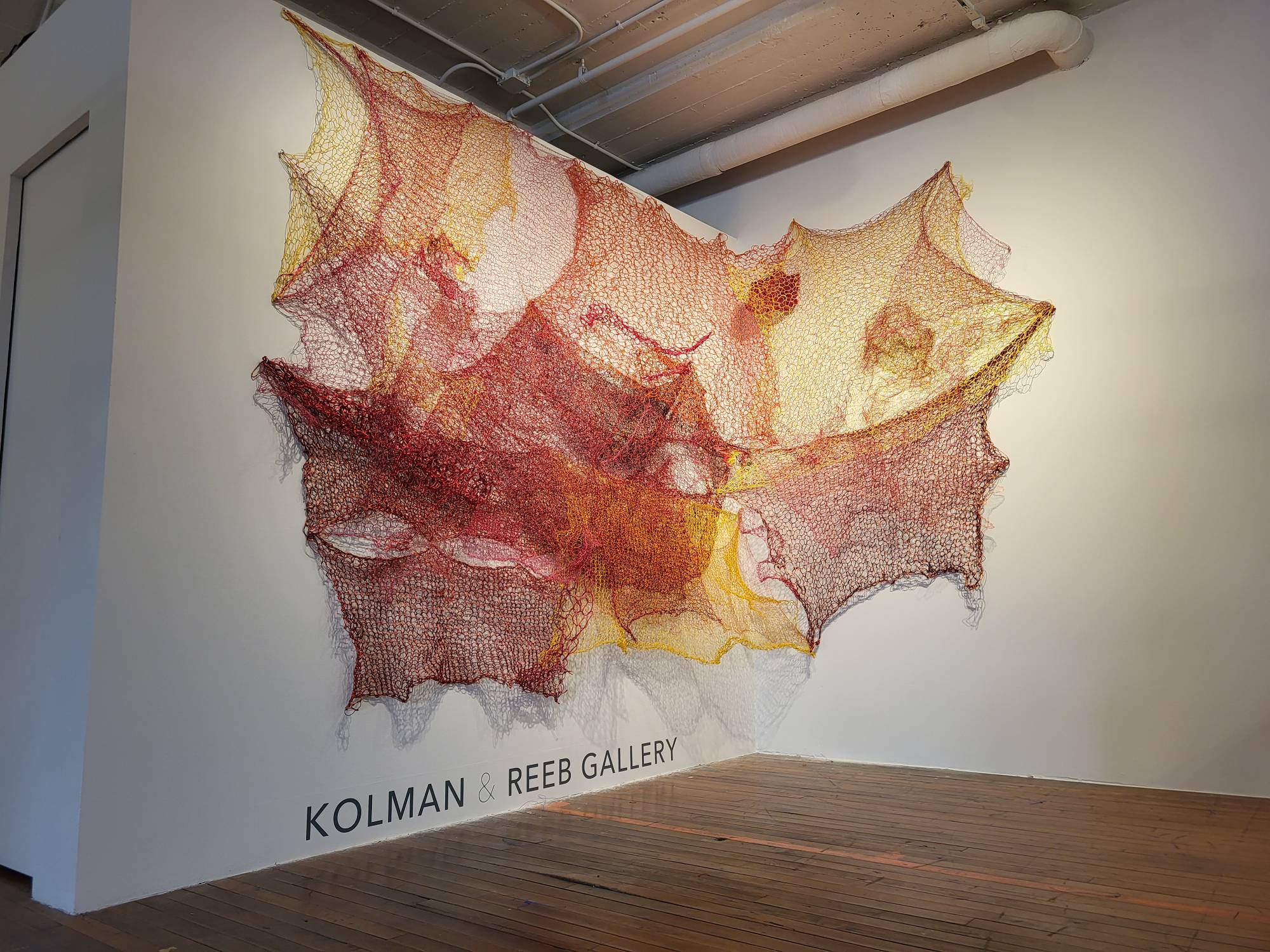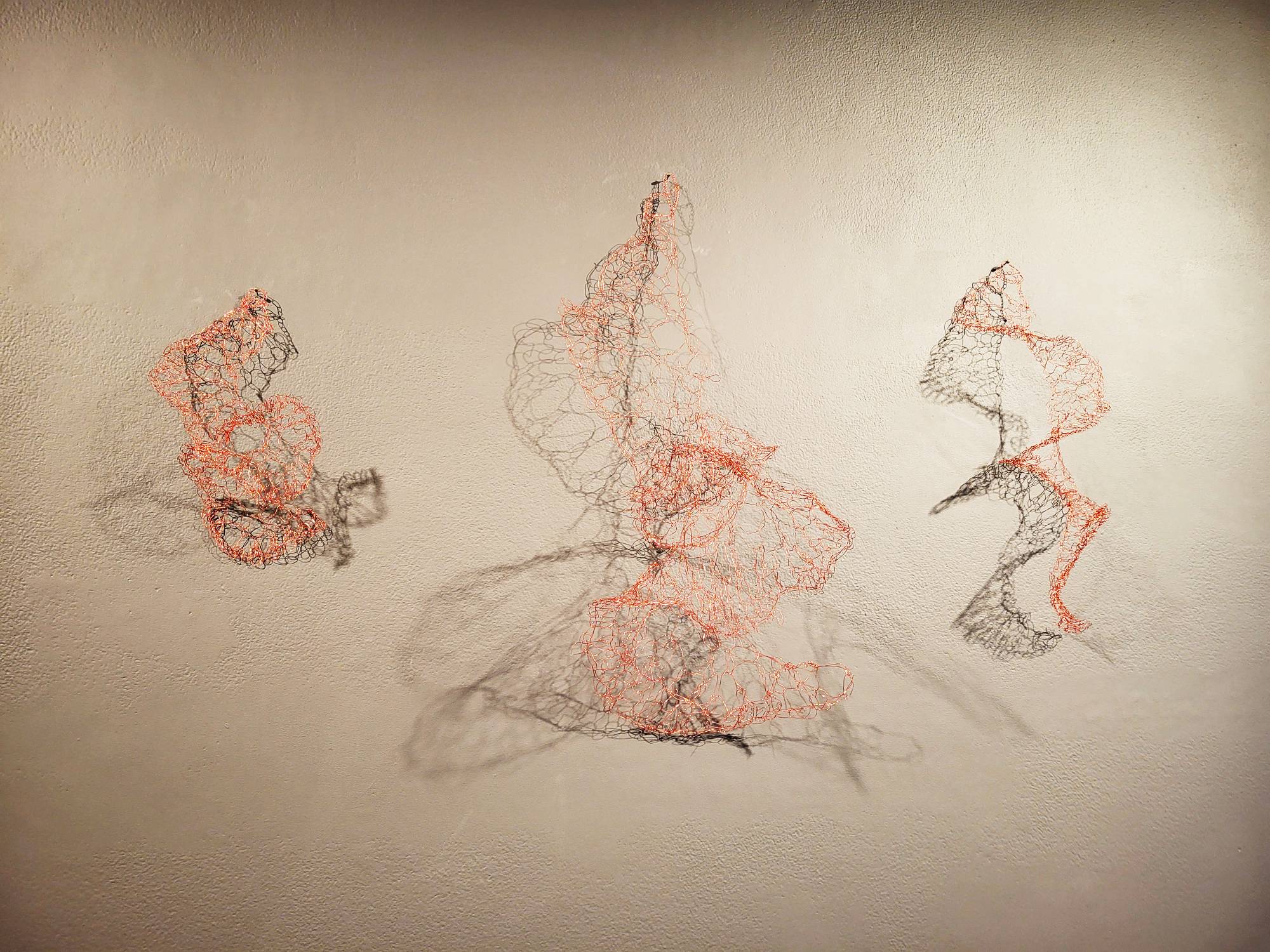In Making Climate Change Visible, Carolyn Halliday accomplished her goal with loosely knitted wire and installation space describing the pieces to visitors as she readied the explanatory tags for the show at Kolman and Reeb Gallery, #395 Northrup King Building.

It’s meant to be interactive, she said, dodging behind the piece that represents the 2023 summer wildfire smoke that kept us indoors for days. Tall visitors duck under her first piece in the series, COVID 19 Blue, reflecting how blue the skies were when people stayed home during the pandemic. Halliday’s son and daughter-in-law are evolutionary biologists. They confirmed that emissions were at their lowest then, so clear in New Delhi that for once, Indians could see the Himalaya mountains.

The most prominently lit big piece is Siren Sunset, the paradox of how gorgeous the sunsets are in the presence of smog, which Halliday first experienced in Los Angeles in the 1970s. Smaller pieces throughout the room are “atmospheric abstractions,” she explained. And on another wall is a simplified graph from 1880 to 2020, with hyperbolic knitted flower-like forms in blues, purples, pinks, coppers, leading to oranges, reds and yellows (in the 1950s), more pinks and a steep incline of reds at the end.

The hyperbolic forms, similar to the ones crocheted to call attention to coral reefs dying, were inspired by learning of Latvian mathematician Daina Tamina, who used knit and crochet to teach about parabolic forms.
Halliday hopes viewers respond to the elements of color and the tactile essence of her knit work, reminding them of the reality of the negative impact we all have on our environment, and the positive shifts that are possible based on recent experience.
A reception will be held Saturday, April 13 from 7-9 p.m., and an artist talk on Thursday, May 2 at 7:15 following a dance performance from 6-7 p.m. For more information, visit: kolmanreebgallery.com or call 612-385-4239.
—Article and photos by Margo Ashmore
